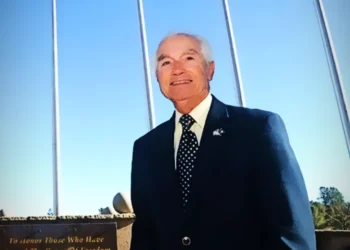Redding, Calif. —
A significant and symbolic shift took place in northern California Thursday when the Shasta County Board of Supervisors voted 3-2 to back a resolution that could lead to the split of California into two states. The move is a direct response to Proposition 50’s approval on Nov. 4, which that board and the resolution’s sponsor say underscores rural frustration with Sacramento’s political dominance.
The timeline and what happened
-
Nov. 4, 2025: California voters approve Prop. 50, an amendment adjusting congressional district maps.
-
Nov. 6, 2025: Assemblymember James Gallagher presents his resolution to the Shasta County board.
-
Same day: The board votes 3-2 to adopt the resolution supporting the notion of separating the inland region into a new state.
-
Notably, the word “secession” was removed from the final language following board discussion. Scout
Key players & motivations
-
James Gallagher: The Republican state assemblyman behind the resolution, Gallagher said the passage of Prop. 50 “further concentrated power in Sacramento at the expense of rural voices.”
-
Board of Supervisors: Three members voted in favor; two opposed. Supervisor Matt Plummer and Supervisor Mary Rickert voted no.
-
The motivation: Inland counties—many of them rural and conservative—argue that the political and economic clout of coastal urban regions has overshadowed their local needs, from wildfire mitigation and utility bills to representation. Gallagher said: “They don’t really care about us, because they don’t have to.”
What the resolution says and its limitations
The adopted board resolution endorses the idea of exploring a “two‐state solution” in California (coastal vs. inland) but stops short of calling outright for secession. It encourages local jurisdictions to weigh in and invites further study of the feasibility of a separated inland state. The significant legal and constitutional hurdles remain: approval would require the state legislature and the U.S. Congress.
Why local readers in El Dorado County should care
While El Dorado County did not vote on the resolution, the movement underscores a broader regional tension between California’s inland and coastal counties. Residents here may ask:
-
Will this affect state funding formulas or resource allocation in the Sierra and foothill regions?
-
Could this kind of movement influence future redistricting or representation in Sacramento that directly impacts communities like ours?
-
Does the grievance over Prop. 50 signal growing political polarization that could shift state policies on topics like water, wildfire, utility costs, and local governance?
Voices of support and caution
Supervisor Kelstrom, one of the “yes” votes, observed that the removal of the term “secession” was deliberate to reduce legal risk yet still send a strong signal. “Will we get some hurdles? Yeah, absolutely,” he said.
On the opposing side, Supervisor Plummer questioned how many inland counties would really join the movement given that several of them supported Prop. 50. “If they’re willing to go as far as voting in favor of Prop. 50, the likelihood that they would then be interested in seceding … seems low,” he said.
The road ahead
Although the resolution passed, analysts say the odds of actually carving out a new state remain slim. As one policy expert told Newsweek: “Many times in the past, legislators and activists have attempted to split the state of California… Those attempts have all failed.” Newsweek Still, the movement may serve as a bargaining chip—raising the visibility of inland issues and perhaps influencing Sacramento’s future responsiveness to rural concerns.
For residents of El Dorado County, the immediate impact may be minimal. But this episode reflects a deeper fault line in California politics—one between urban/coastal and rural/inland that could shape policy debates for years to come.










